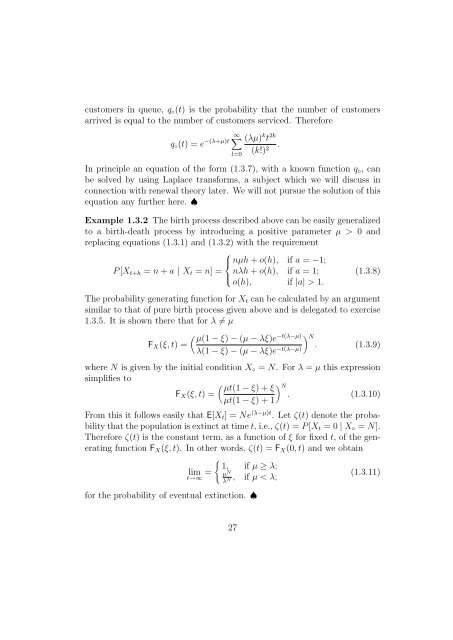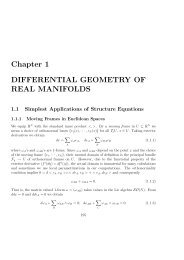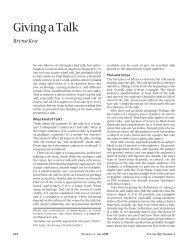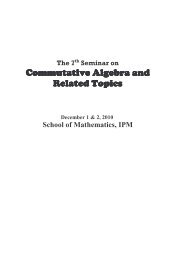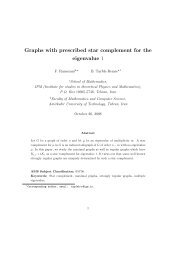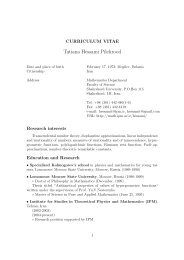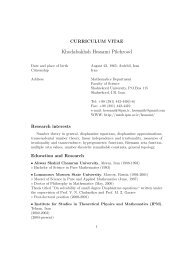1 Continuous Time Processes - IPM
1 Continuous Time Processes - IPM
1 Continuous Time Processes - IPM
Create successful ePaper yourself
Turn your PDF publications into a flip-book with our unique Google optimized e-Paper software.
customers in queue, q◦(t) is the probability that the number of customers<br />
arrived is equal to the number of customers serviced. Therefore<br />
q◦(t) = e −(λ+µ)t<br />
∞<br />
l=0<br />
(λµ) k t 2k<br />
(k!) 2 .<br />
In principle an equation of the form (1.3.7), with a known function q◦, can<br />
be solved by using Laplace transforms, a subject which we will discuss in<br />
connection with renewal theory later. We will not pursue the solution of this<br />
equation any further here. ♠<br />
Example 1.3.2 The birth process described above can be easily generalized<br />
to a birth-death process by introducing a positive parameter µ > 0 and<br />
replacing equations (1.3.1) and (1.3.2) with the requirement<br />
⎧<br />
⎪⎨ nµh + o(h), if a = −1;<br />
P [Xt+h = n + a | Xt = n] = nλh + o(h),<br />
⎪⎩<br />
o(h),<br />
if a = 1;<br />
if |a| > 1.<br />
(1.3.8)<br />
The probability generating function for Xt can be calculated by an argument<br />
similar to that of pure birth process given above and is delegated to exercise<br />
1.3.5. It is shown there that for λ = µ<br />
−t(λ−µ)<br />
µ(1 − ξ) − (µ − λξ)e<br />
FX(ξ, t) =<br />
λ(1 − ξ) − (µ − λξ)e−t(λ−µ) N . (1.3.9)<br />
where N is given by the initial condition X◦ = N. For λ = µ this expression<br />
simplifies to<br />
<br />
µt(1 − ξ) + ξ N<br />
FX(ξ, t) =<br />
.<br />
µt(1 − ξ) + 1<br />
(1.3.10)<br />
From this it follows easily that E[Xt] = Ne (λ−µ)t . Let ζ(t) denote the probability<br />
that the population is extinct at time t, i.e., ζ(t) = P [Xt = 0 | X◦ = N].<br />
Therefore ζ(t) is the constant term, as a function of ξ for fixed t, of the generating<br />
function FX(ξ, t). In other words, ζ(t) = FX(0, t) and we obtain<br />
lim<br />
t→∞ =<br />
1, if µ ≥ λ;<br />
µ N<br />
λ N , if µ < λ;<br />
for the probability of eventual extinction. ♠<br />
27<br />
(1.3.11)


